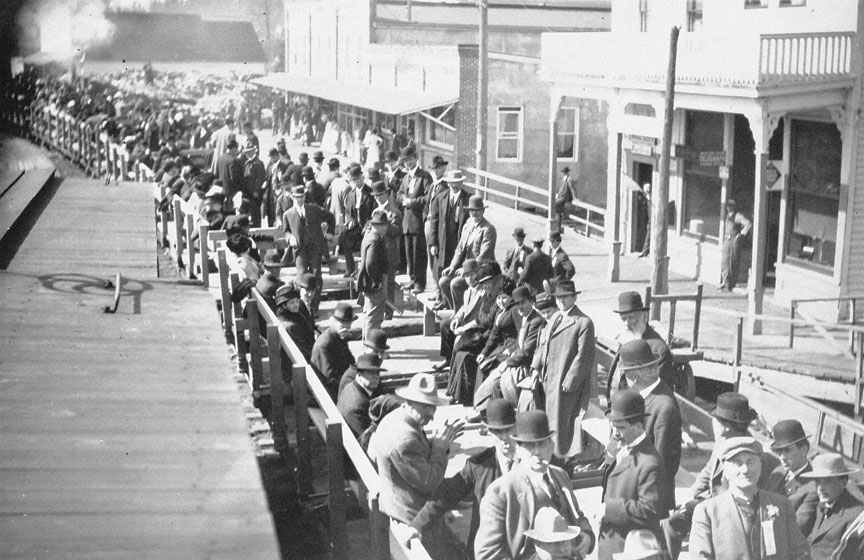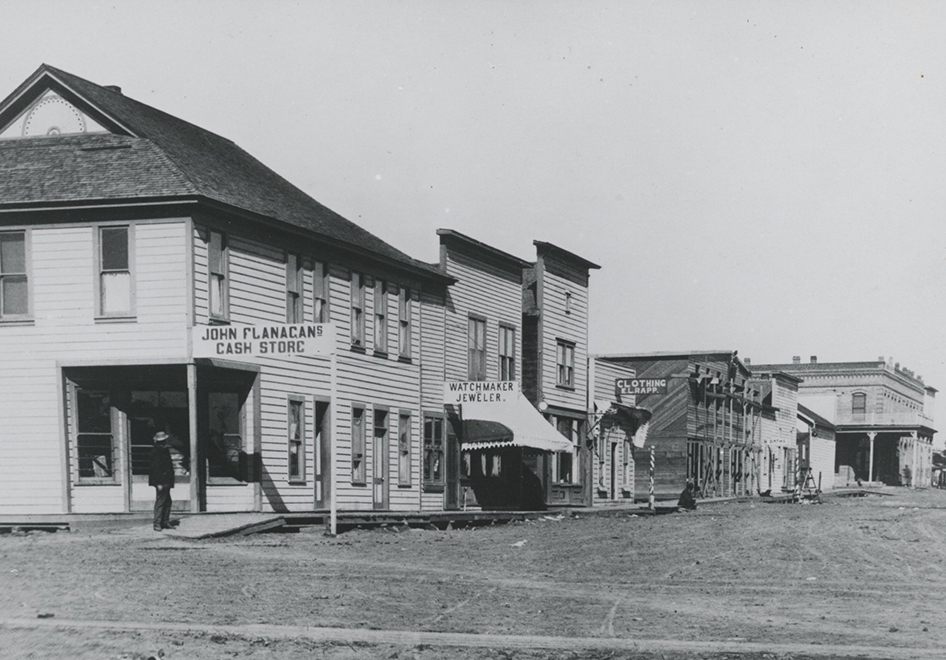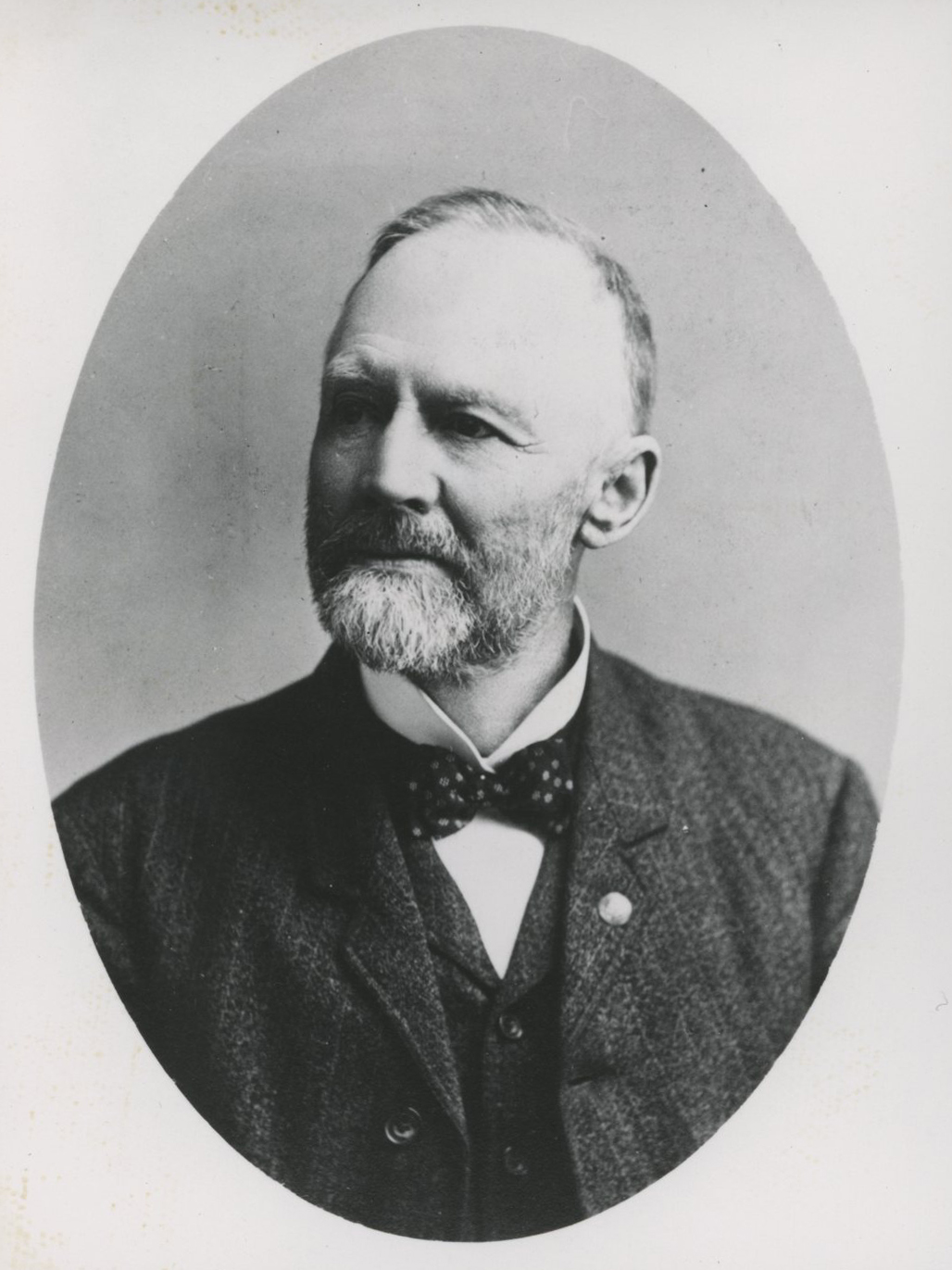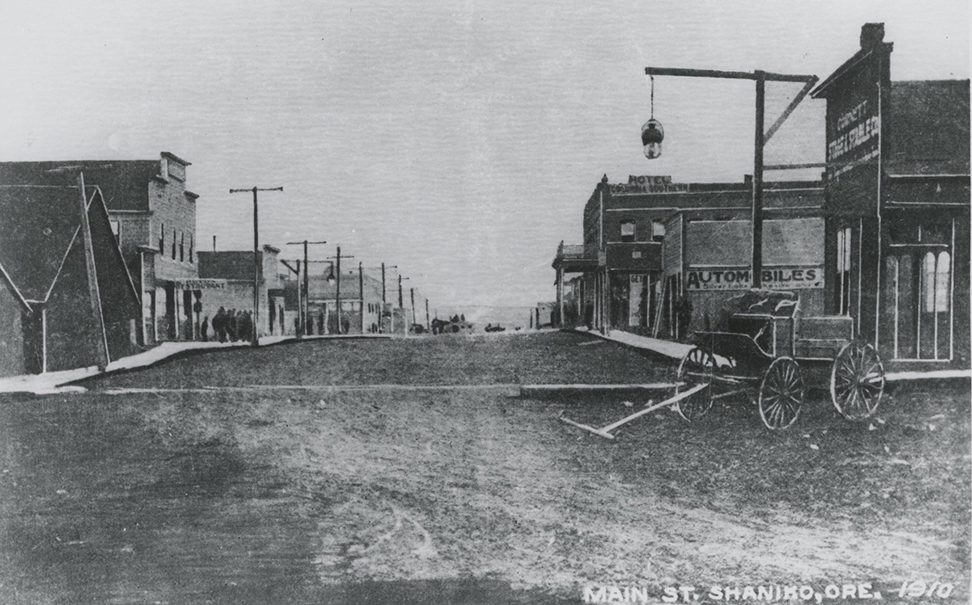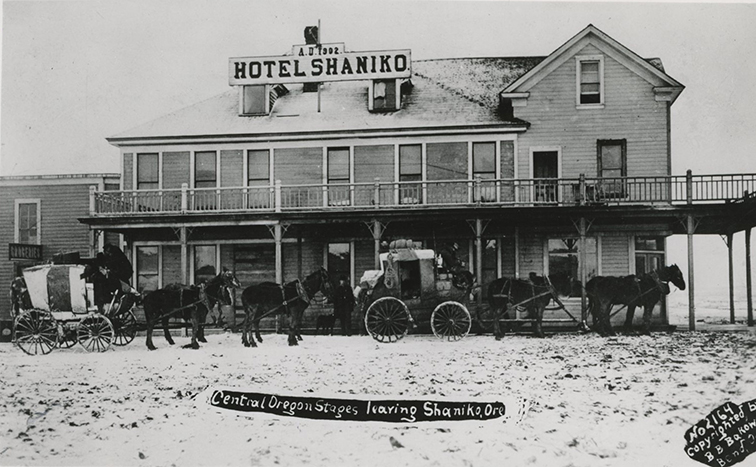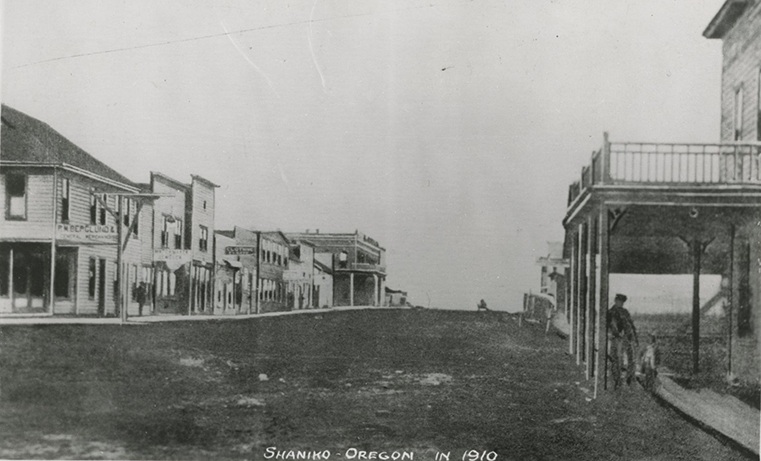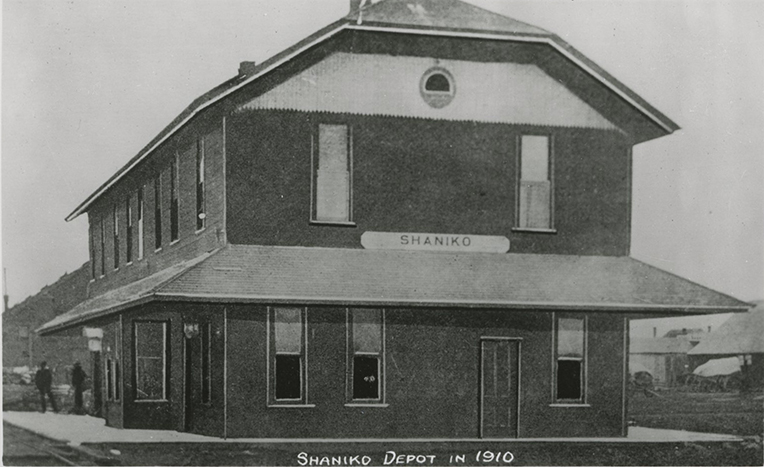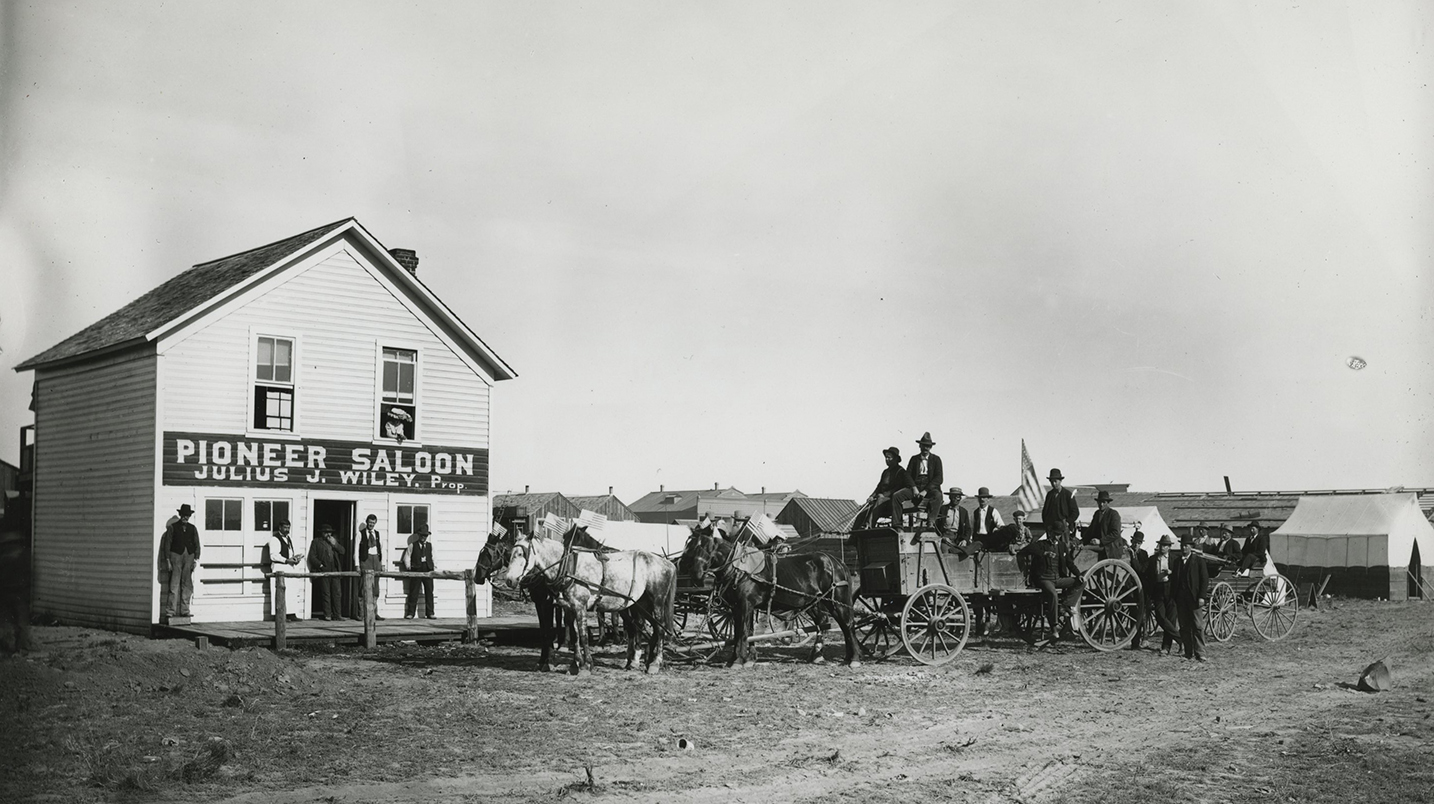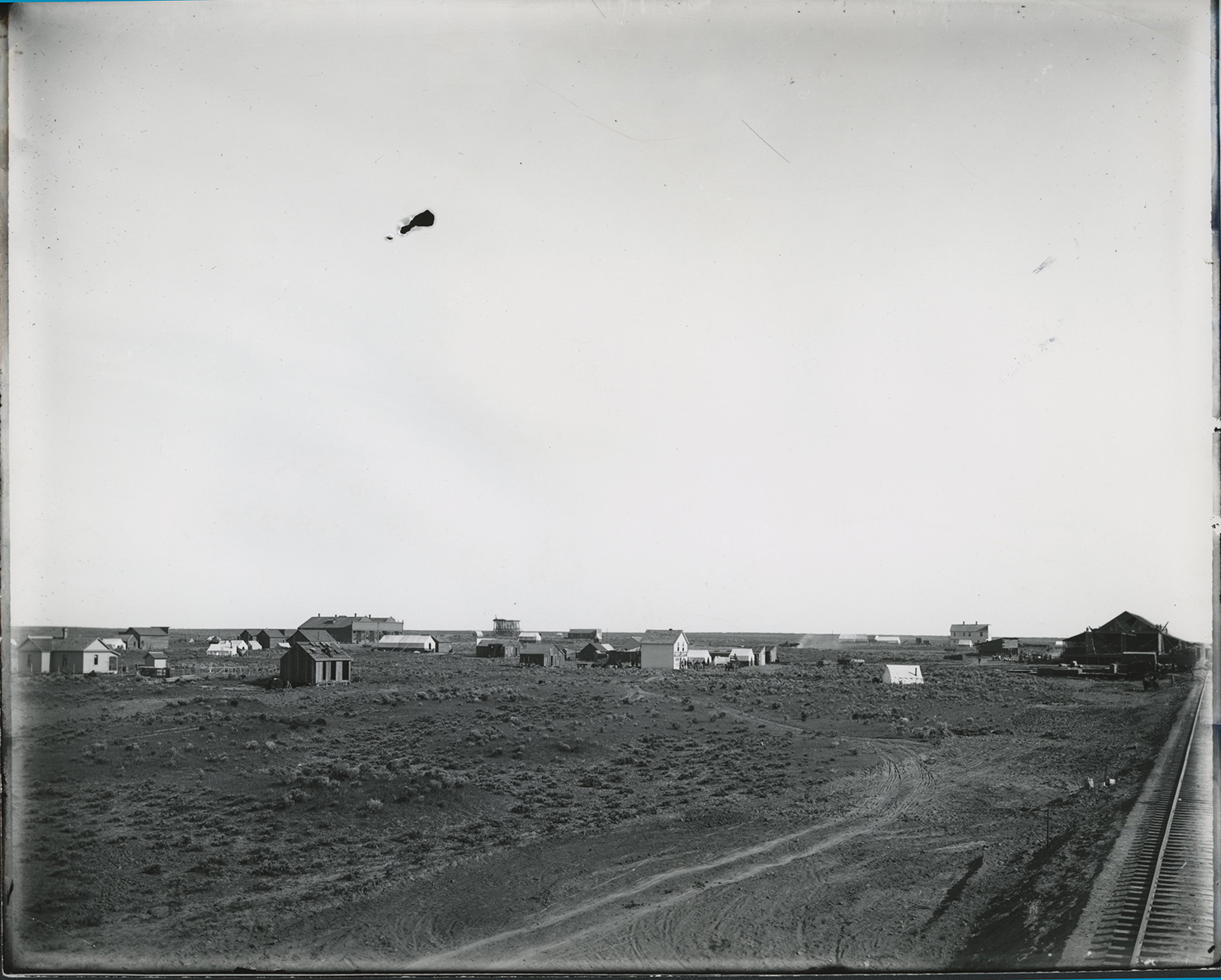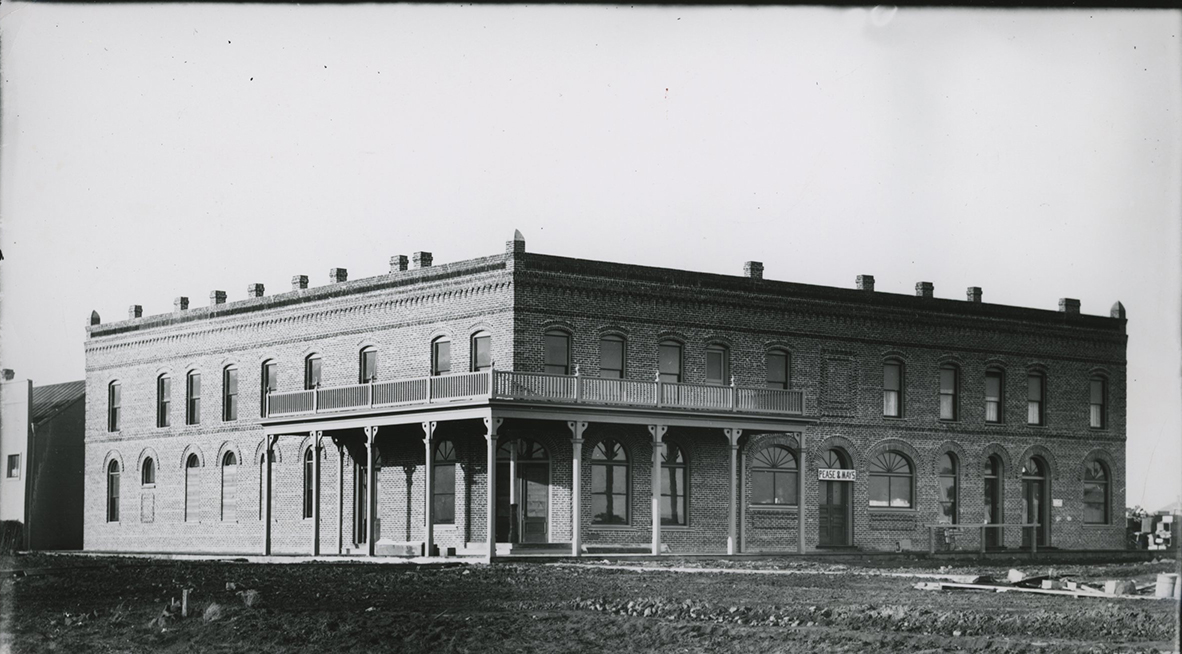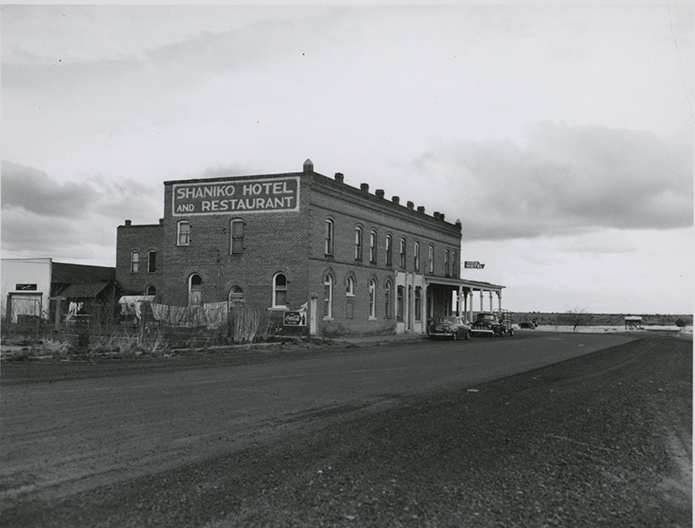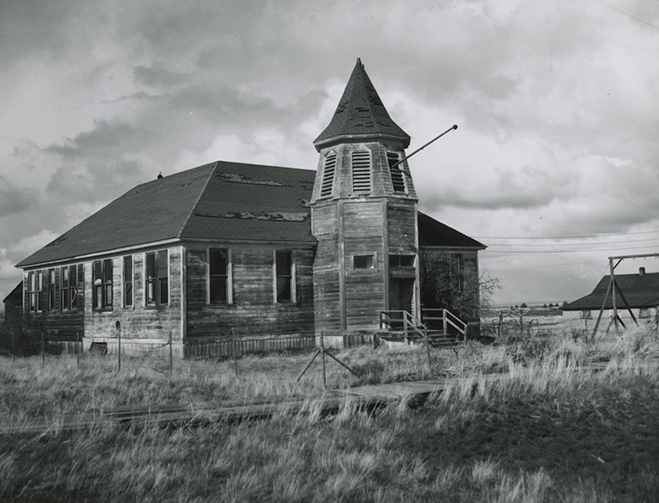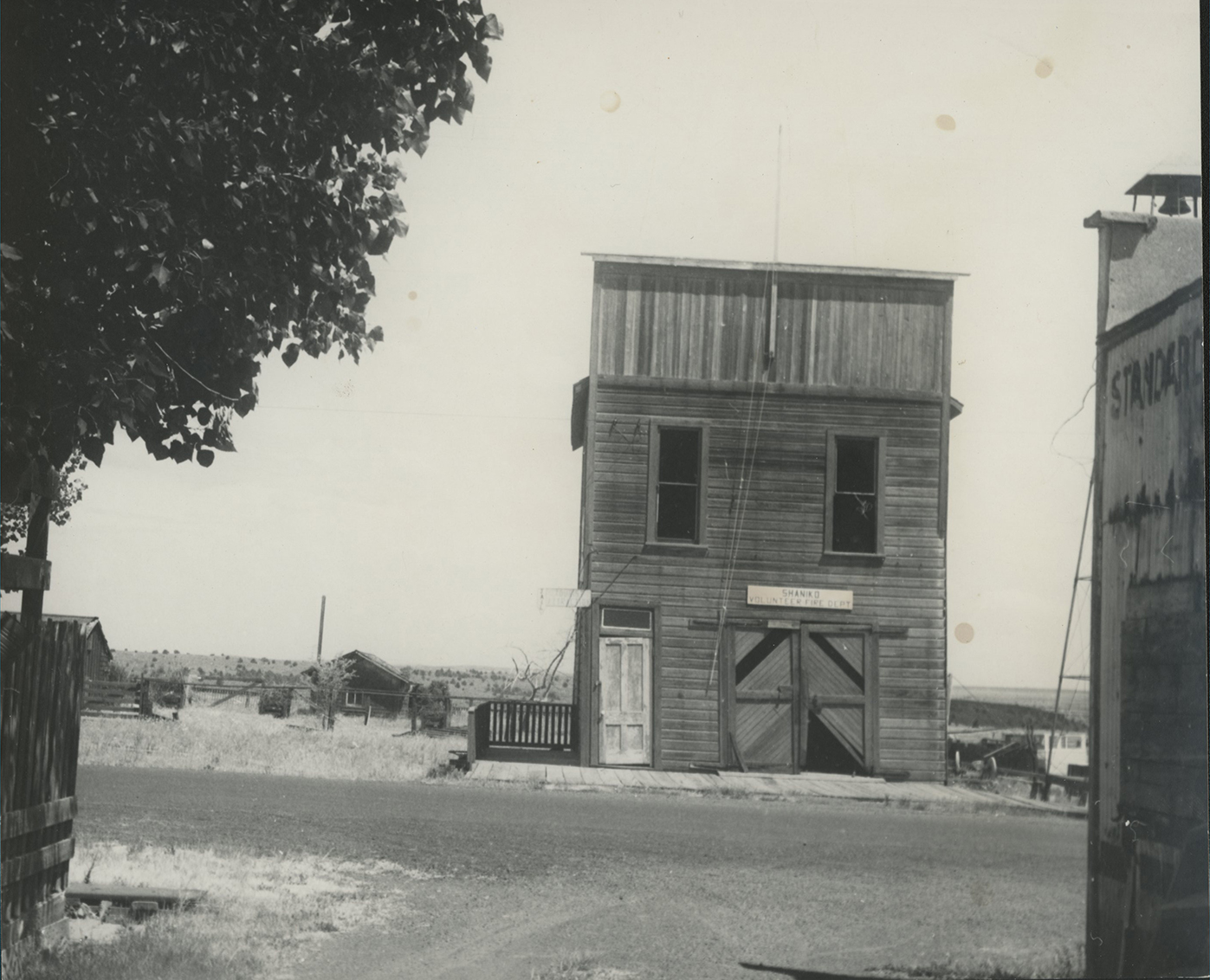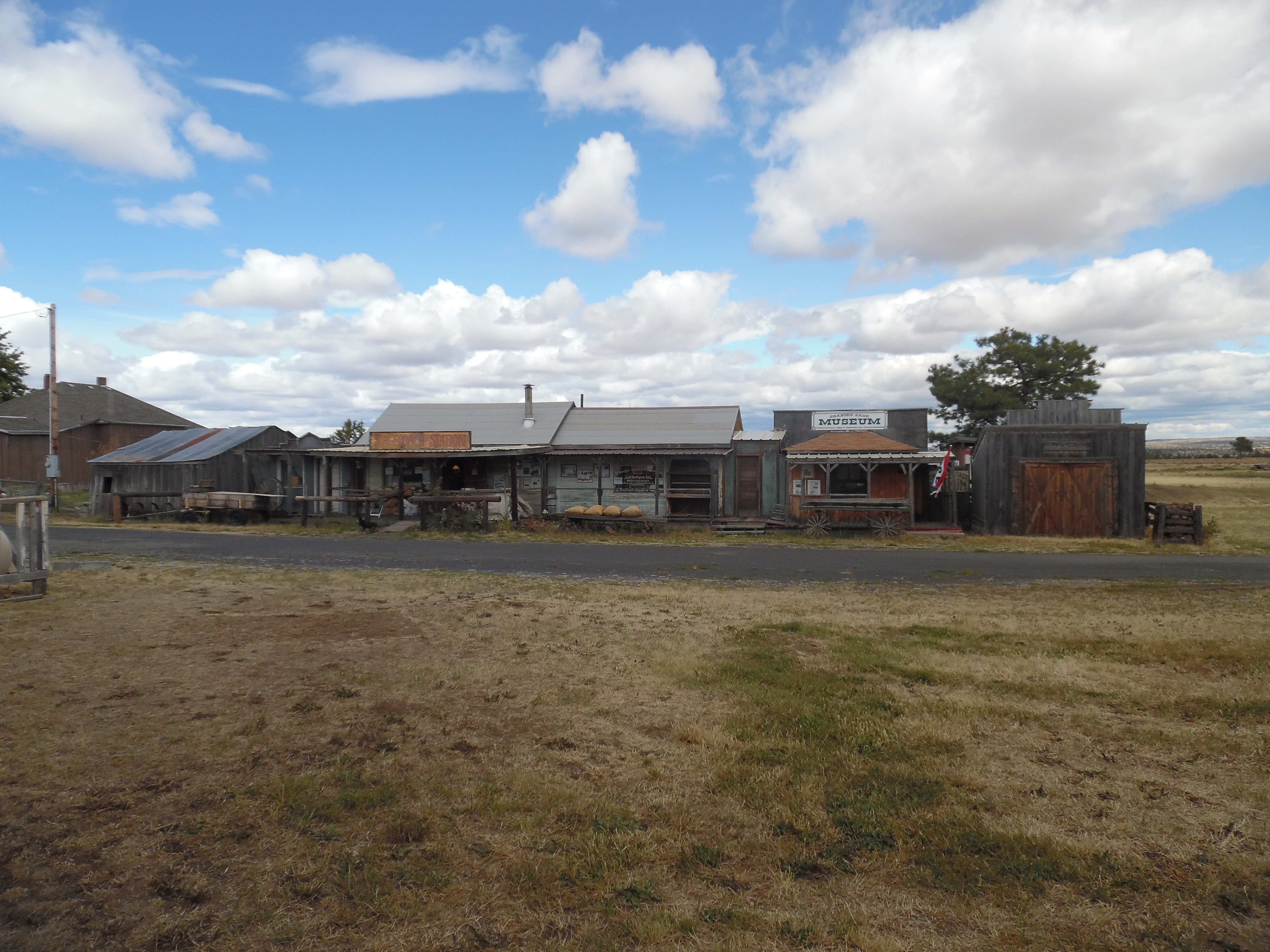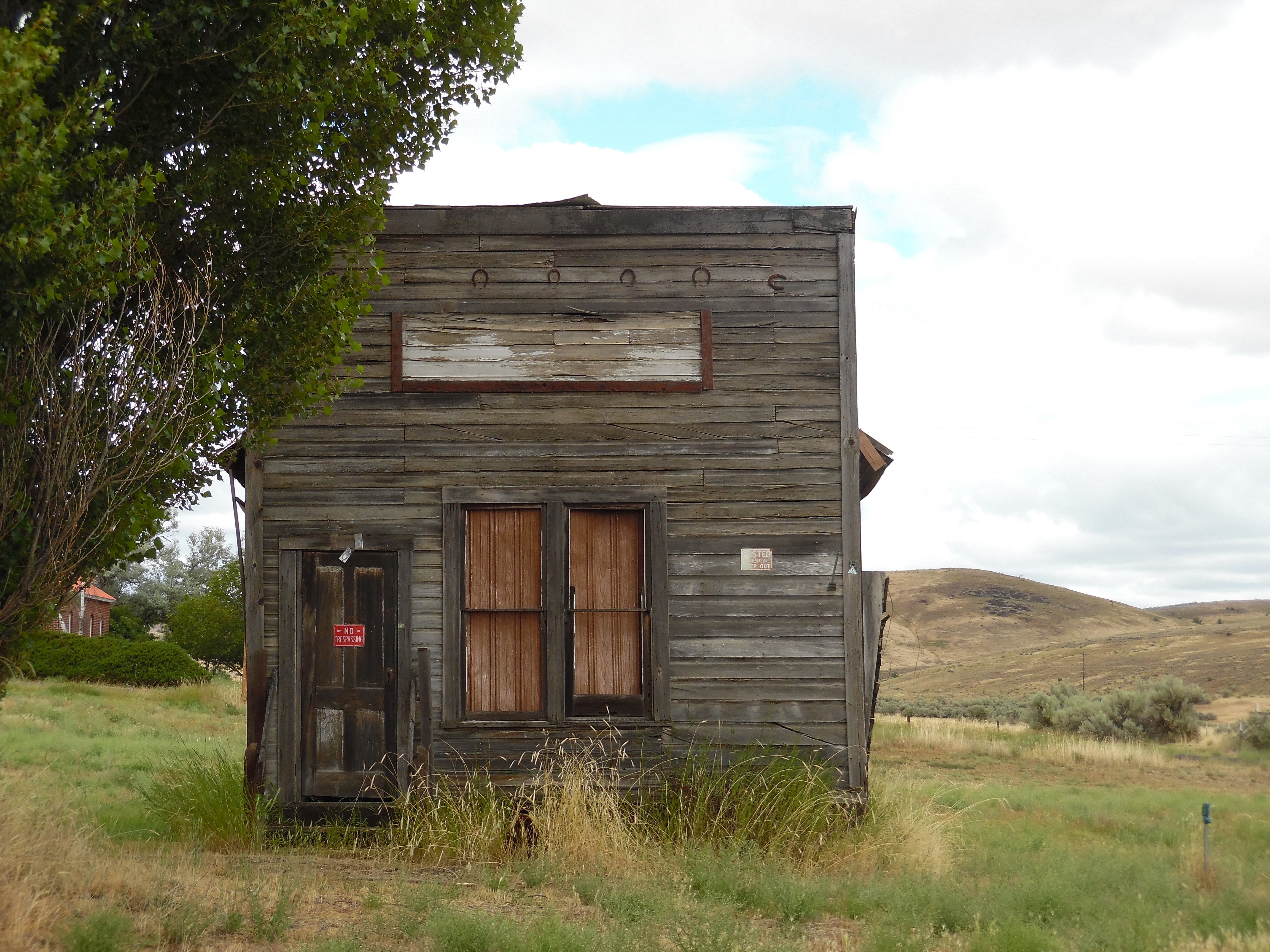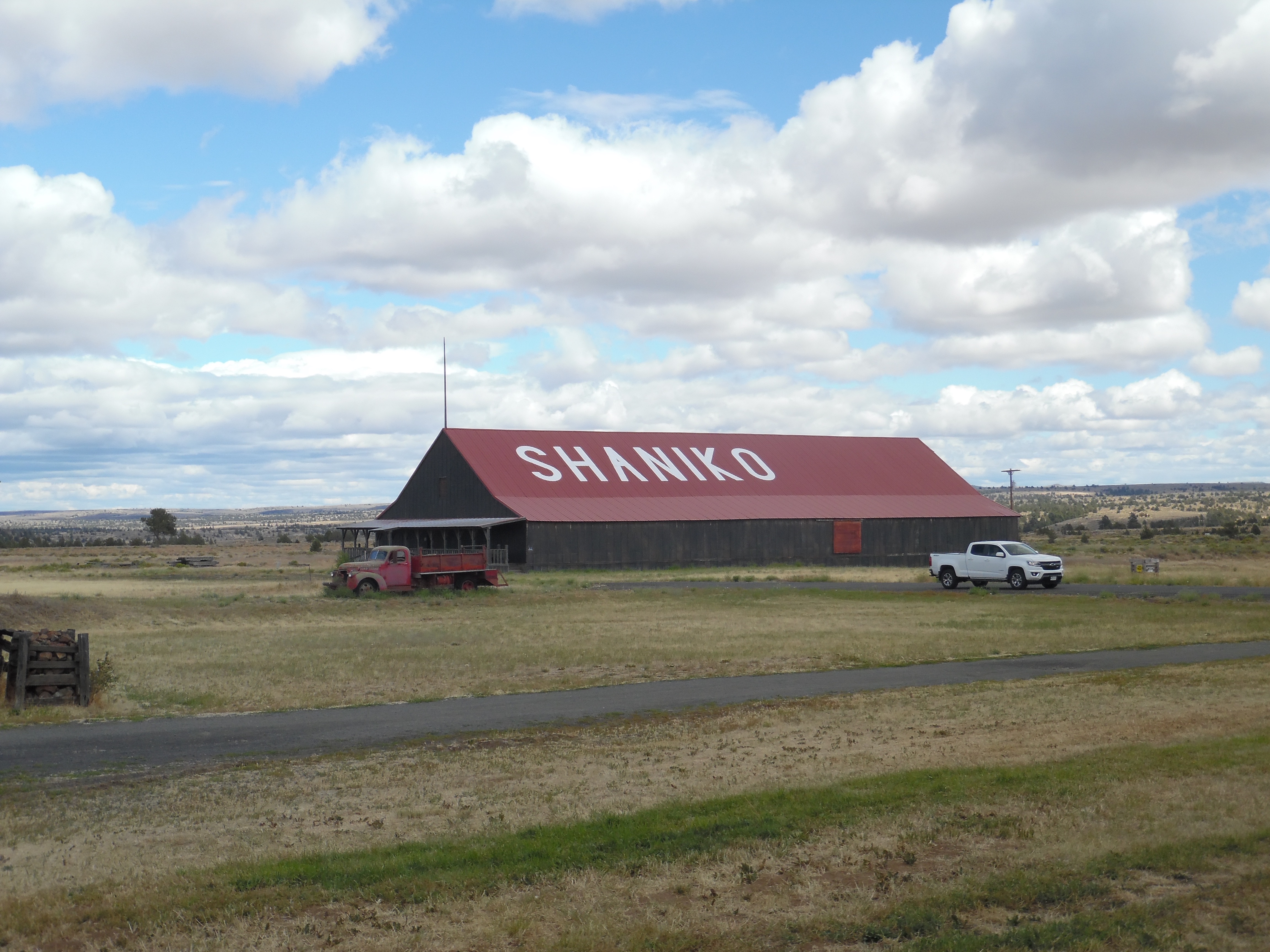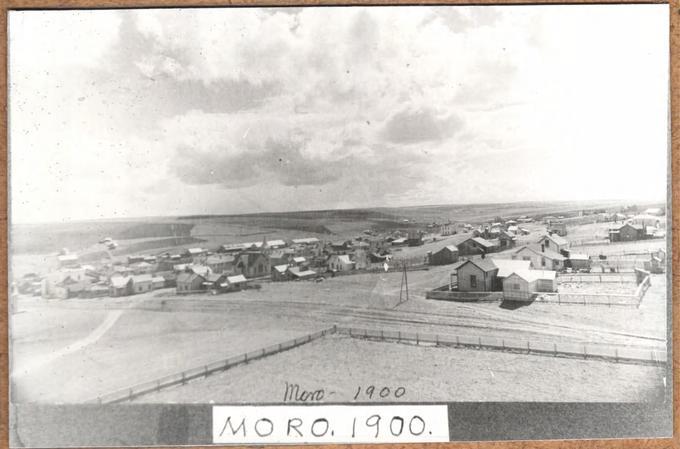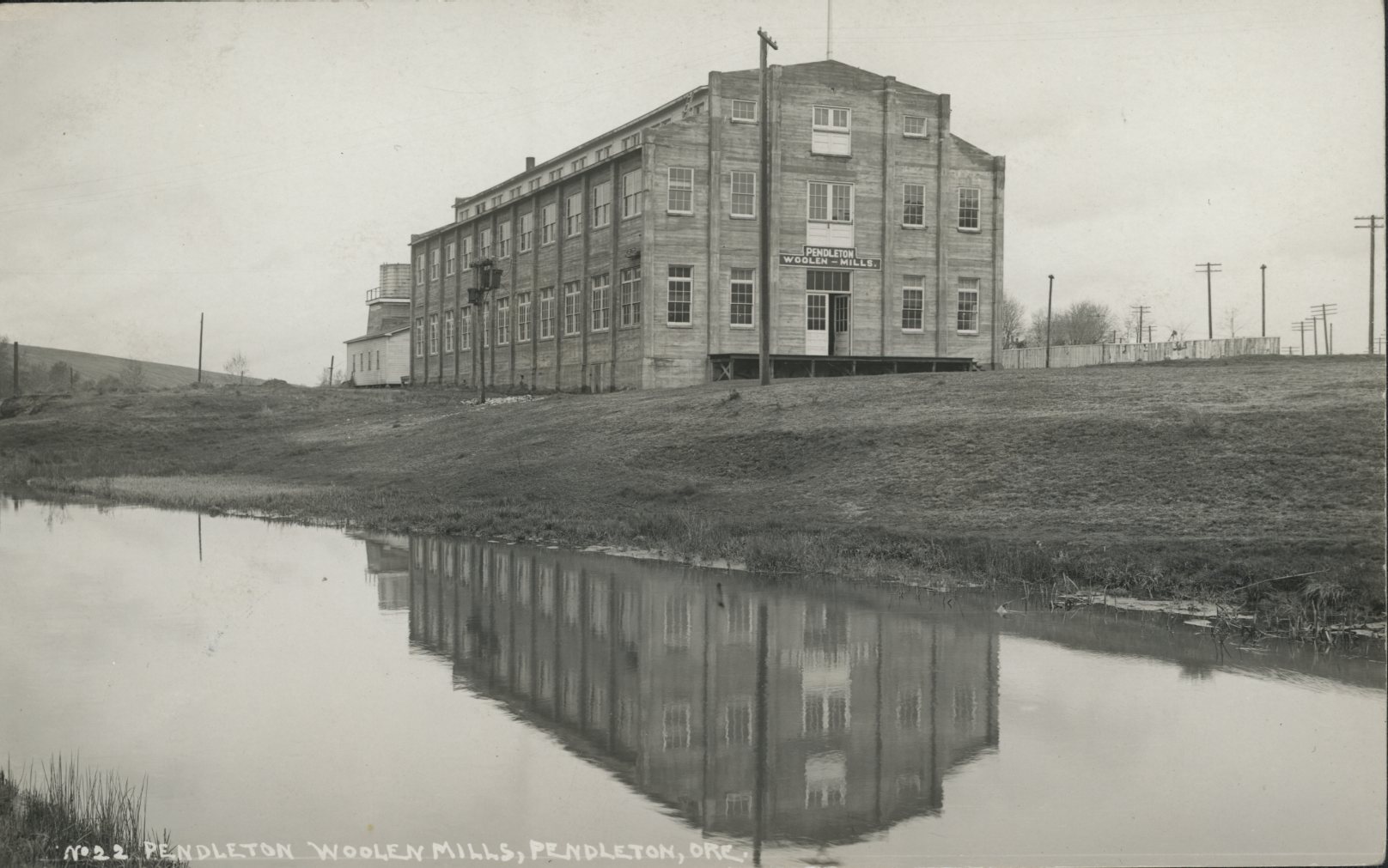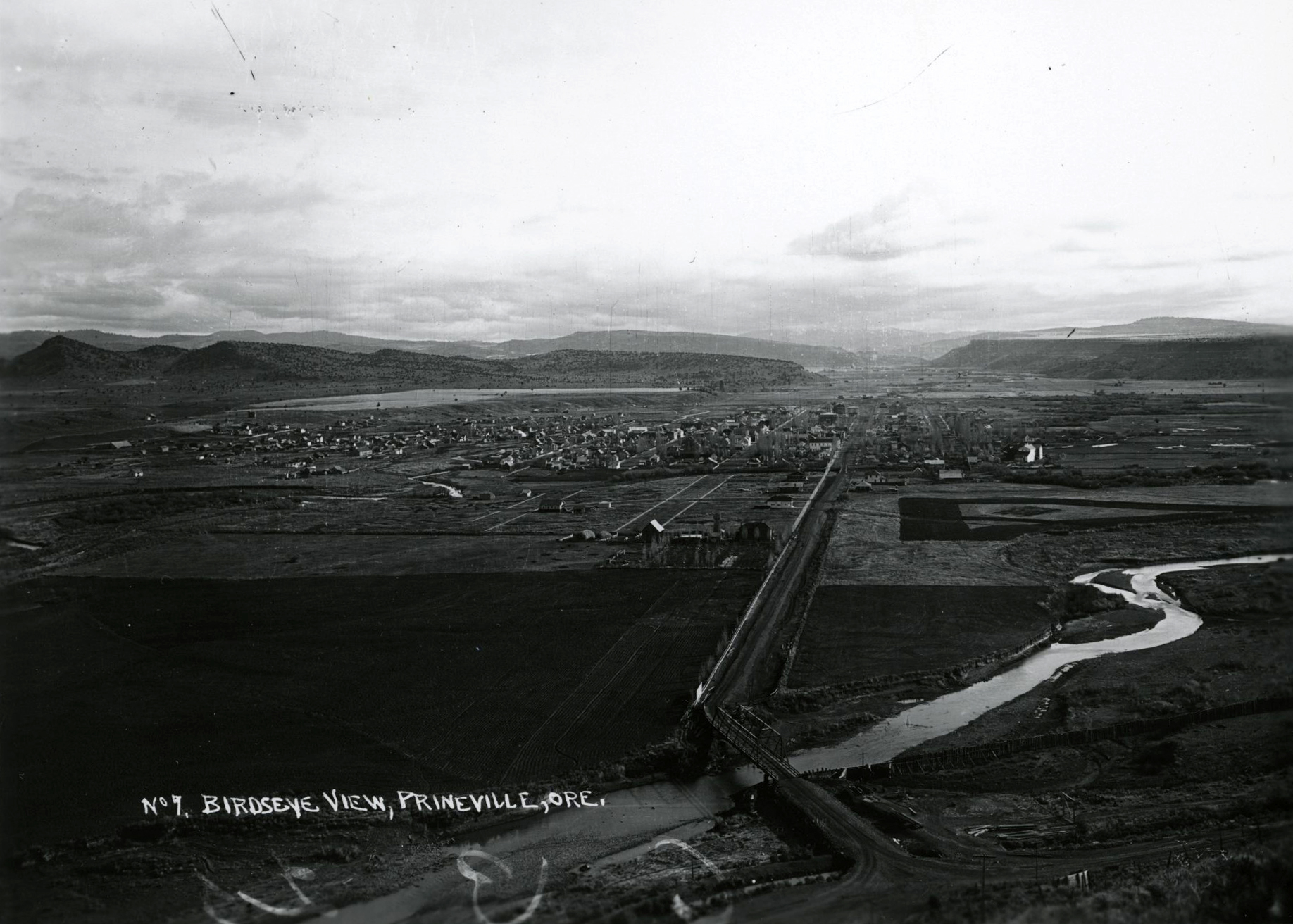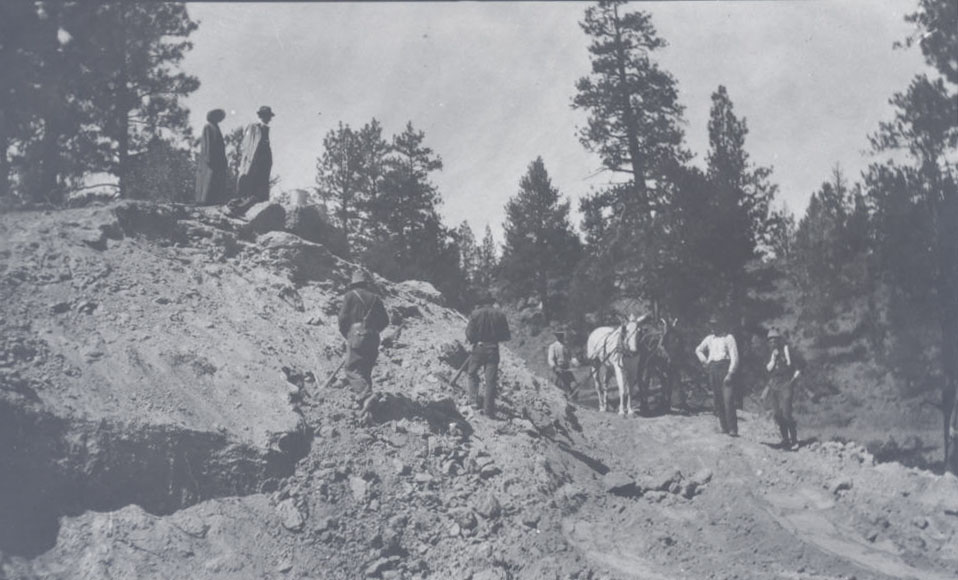No town in Oregon has seen more rapid growth and decline than Shaniko, about forty miles northeast of Madras in Wasco County. Incorporated in 1901, the town was known as the Wool Capital of the World in the early years of the twentieth century, and local farmers and ranchers shipped millions of pounds of wool and carloads of grain and livestock to market on the Columbia Southern Railroad. By the early 1910s, however, the railroad had lost most of its business to the Oregon Trunk Railway, and Shaniko became a virtual ghost town.
With the passage of the Homestead Act in 1862, many EuroAmericans settled in central Oregon. That same year, gold was discovered in Canyon City, south of present-day John Day, which attracted thousands of miners who purchased supplies at mining camps such as Bakeoven and Cross Hollows. By 1869, some thirty homesteads had been issued to applicants in central Oregon. As the gold played out in the area, settlers took up land claims, among them August Scherneckau, who arrived in Cross Hollows from Germany in 1874 and established the post office there in 1879. The town is "in the midst of a fine stock country,” the January 1, 1901, Shaniko Leader wrote, and “will soon be known everywhere as a city of first importance."
In 1897, the Columbia Southern Railway Company filed papers to build a railroad from Biggs on the Columbia River to Wasco, Moro, and Grass Valley, with a plan to extend the line to Prineville. Businessmen from The Dalles and Moro formed the Townsite Company in 1899 to create a rail terminal between Grass Valley and Prineville, and they laid out streets and a water system for a town near the site of Cross Hollows. By 1900, the year the Columbia Southern came to town, the town’s population was 172. The town, incorporated in 1901, was named Shaniko, after the Wasco Indians’ pronunciation of the name Scherneckau.
The land around Shaniko was not good farmland, but it was adequate as sheep and cattle country. Many homesteaders sold their 160 acres to ranchers, who increased their herds. Incoming freight in 1901—primarily farm equipment, building materials, fence posts, and coal and wood fuel—amounted to 1,400 railroad cars, making Shaniko one of the largest inland shipping center in the world. From April to October 1900, the railroad shipped 230 railroad cars of sheep, 5 cars of horses and mules, 31 cars of cattle, and nearly 3 million pounds of wool from Shaniko.
The January 1, 1901, the Shaniko Leader boasted: “As a shipping and distributing point, Shaniko is second to no city in Oregon (except Portland),” servicing “the vast inland territory of varied resources, extending into California.” Shaniko, the Leader wrote, was the mecca of the inland territory. Columbia Southern Railway backers built huge warehouses for building supplies and farm products—large enough to hold 4 million pounds of wool.
Wool sales occurred as many as three times a year, depending on the spring arrival of freight wagon trains from Burns, Bend, and Condon or from Bridge Creek, Fossil, and Maupin. One day’s sale in 1903 recorded over a million dollars for the Moody Warehouse Company. In addition to the 2,229 tons of wool, 1,168,866 bushels of wheat and numerous carloads of stock were shipped out of Shaniko on the Columbia Southern, making it one of the most productive short lines in the nation. In 1904, over five million dollars in wool was sold.
The boom lasted until railroad magnate James J. Hill opened the Oregon Trunk Railway, a rival rail line that ran up the Deschutes River Canyon to Bend. Shaniko’s population—600 in the 1910 census—began to decline, helped along by two fires that destroyed much of the business district in 1910 and 1911.
One constant in Shaniko since 1902 has been the Columbia Southern Hotel, now called the Shaniko Hotel. Built in the Italianate style, it has been a hotel, bank, stage stop, saloon, dance hall, and general gathering place. The most imposing building in town, the hotel was listed on the National Register of Historic Places in 1979; the Shaniko Historic District was designated in 1982. Other historic buildings are the Sage Museum, the Shaniko School, City Hall and Jail, the Wedding Chapel, and the Wool Warehouse.
Shaniko won temporary reprieves when it headquartered workers and their families during the building of Highway 97, the grading and improving of roads in Wasco County in the 1920s and 1930s, and the building of a gas pipeline from California to Washington in the 1950s. In 1959, the Oregon Centennial Commission designated Shaniko Oregon’s Ghost Town of the Year. On weekends in August, the town attracts as many as four hundred people each year.
In 2000, Oregon businessman Robert B. Pamplin Jr. purchased the hotel and a few small businesses and city lots in Shaniko. He renovated some buildings and planned to build thirty-five houses for workers who served tourists. But in 2008 the Shaniko City Council, in consultation with the state, denied Pamplin an easement from a well on one of his lots to supply water to the hotel and restaurant. He closed the hotel and cafe, capped the well, and put up “for sale” signs. The New York Times reported that the asking price was $3.1 million and that “the market for ghost towns is limited, particularly expensive ones.” After several years, Shaniko resident David Long raised money through the nonprofit South Wasco Fire and Rescue Association to refurbish and operate the facility. The hotel reopened in August 2023.
The Shaniko Preservation Guild, organized in 2004, operates a museum, hosts an annual Wool Gathering, and sponsors the annual Tygh Valley Bluegrass Jamboree and the Ragtime and Vintage Music Festival. In 2023, Shaniko had about twenty-three residents.
-
![]()
Wool buyers at Shaniko, c. 1910.
Courtesy Oregon Hist. Soc. Research Lib., Orhi21067
-
![]()
Main Street, Shaniko.
Courtesy Oregon Hist. Soc. Research Lib., 61471
-
![]()
Augustus Scherneckau, c.1880.
Courtesy Oregon Hist. Soc. Research Lib., 014521
-
![]()
Main Street, Shaniko, c. 1910.
Courtesy Oregon Hist. Soc. Research Lib., 58442
-
![]()
Hotel Shaniko.
Courtesy Oregon Hist. Soc. Research Lib., Orhi56059
-
![]()
Shaniko, 1910.
Courtesy Oregon Hist. Soc. Research Lib., Orh55854
-
![]()
Shaniko train depot, 1910.
Courtesy Oregon Hist. Soc. Research Lib., 56058
-
![]()
Pioneer Saloon, Shaniko.
Courtesy Oregon Hist. Soc. Research Lib., 6145
-
![]()
Shaniko.
Courtesy Oregon Hist. Soc. Research Lib., Orhi6143
-
![]()
Pease and Mays, Shaniko.
Courtesy Oregon Hist. Soc. Research Lib., Orhi6141
-
![]()
Shaniko Hotel, 1960.
Courtesy Oregon Hist. Soc. Research Lib., 5413, photo by Robert Hacker
-
![]()
Shaniko Schoolhouse, 1960.
Courtesy Oregon Hist. Soc. Research Lib., 5417, photo by Robert Hacker
-
![]()
Volunteer fire station, Shaniko.
Courtesy Oregon Hist. Soc. Research Lib., photo file 958-A
-
![]()
Main Street, Shaniko, 2016.
Courtesy A.E. Platt
-
![]()
Stagecoach station and museum, Shaniko, 2016.
Courtesy A.E. Platt
-
![]()
Shaniko, blacksmith shop? 2016.
Courtesy A.E. Platt
-
![]()
Shaniko, 2016.
Courtesy A.E. Platt
Related Entries
-
![Moro]()
Moro
The town of Moro, the county seat of Sherman County, is located about e…
-
![Pendleton Woolen Mills]()
Pendleton Woolen Mills
Pendleton Woolen Mills opened in 1909 in a defunct woolen mill that had…
-
![Prineville]()
Prineville
Prineville, the county seat of Crook County, sits on ceded land once be…
-
![Tumalo Irrigation District]()
Tumalo Irrigation District
The Tumalo Irrigation District delivers water from Tumalo Creek, supple…
Related Historical Records
Map This on the Oregon History WayFinder
The Oregon History Wayfinder is an interactive map that identifies significant places, people, and events in Oregon history.
Further Reading
“Town fracas puts future of hotel, jail, shops at risk in Shaniko.” Bend Bulletin, November 19, 2013.
Rees, Helen Guyton. Shaniko: From Wool Capital to Ghost Town, Portland, Ore.: Binford & Mort Publishing, 2002.
Yardley, William. “A Lonesome Oregon Ghost Town May Remain So.” New York Times, June 11, 2009.



